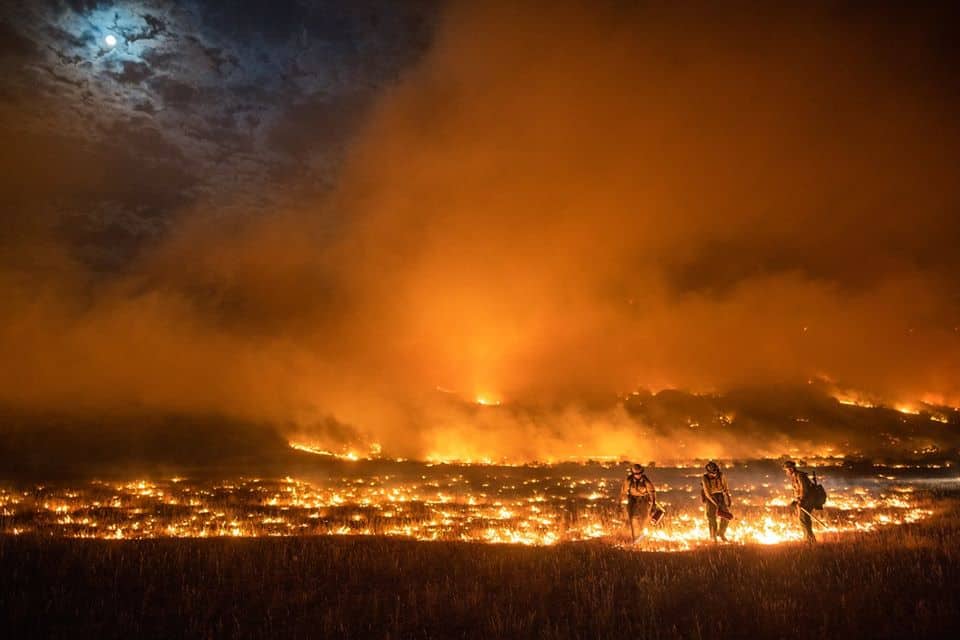Cover photo courtesy of Wyoming Hotshots
Update 8/20 4:38pm: The Pine Gulch fire is now 14% contained, and burns at over 121,000 acres.
Ash drifts down from the sky and collects on the sidewalks at Colorado Mesa University (CMU). At over 121,000 acres, the Pine Gulch fire, burning 18 miles north of Grand Junction, is the second-largest in the history of Colorado.

Courtesy of Wyoming Hotshots
CMU students notice the ash on their cars, the smoke in the air, and the difficulty breathing.
“I think it’s really sad, because I actually am from Grand Junction. It’s not just coming here and experiencing it, it’s my home. It’s really sad, I’ve never seen anything like this before, the smoke and the ashes, it’s just really crazy,” CMU sophomore Brittany Snow said.
The Pine Gulch fire started on July 31, the result of a lightning strike.
“I think the fires are crazy. I think it sucks for some people getting trapped behind it. It’s not going to go away soon with this heat keeping up, [but] I hope that it ends soon so that the air can clear up and people can breathe again, especially people with asthma who are having a hard time breathing right now,” CMU junior Justin Platt said.
The air in Grand Junction has been deemed “Unhealthy for Sensitive Groups” according to the Mesa County Public Health website. Outdoor activities are encouraged to be less intense, and for shorter periods of time.
“I would say [the fires are] alarming, because all of these college students just moved down, and where are they going to go?” CMU freshman Isabel Moore said.
“I don’t think everyone’s realizing how much of an effect [these fires are] going to have. Obviously we see the smoke in the air and the ash falling, but we don’t realize what we’re losing, because we take it for granted,” CMU student Sammy Vickers said.
The Pine Gulch fire is not the only one Colorado is currently battling. The Cameron Peak, Williams Fork, and Grizzly Creek fires are all also burning in the state.
“I wasn’t able to go up to Hanging Lake before I came here. I used to go every year with my family, we’d go up, hike, hang out there, eat lunch, and it’s sad that I couldn’t do that,” sophomore Gerardo Campos Garcia said.
Vegetation around Hanging Lake was scorched as a result of the Grizzly Creek fire, though the area was mostly spared. The Grizzly Creek fire is over 28,000 acres, having started on August 10, east of Glenwood Springs. I-70 has been shut down as a result of it.
“I think it’s really sad that wildfires and that some of our habitat up here is being destroyed, but I know that the authorities are probably taking care of it as best as they can,” CMU junior Kiley McCormack said.
Almost 900 personnel are currently a part of fighting the Pine Gulch fire, while over 800 personnel are fighting the Grizzly Creek fire.
“To me [the fires are] pretty shocking. I looked at this article that said that it’s the second-biggest fire in Colorado history, and I was like, ‘this is crazy.’ And you can see ash falling and everything,” CMU freshman Amara Barfot said.
InciWeb reports Pine Gulch fire has 14% of its perimeter contained, while Grizzly Creek is 4% contained.




